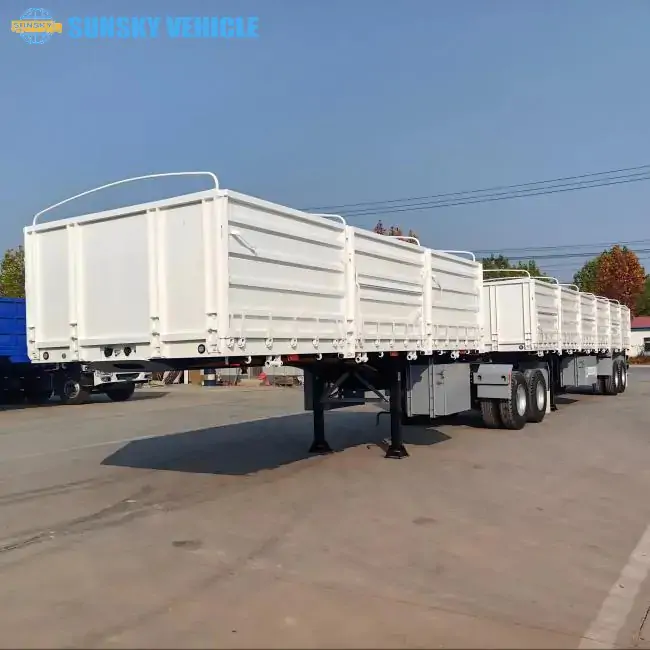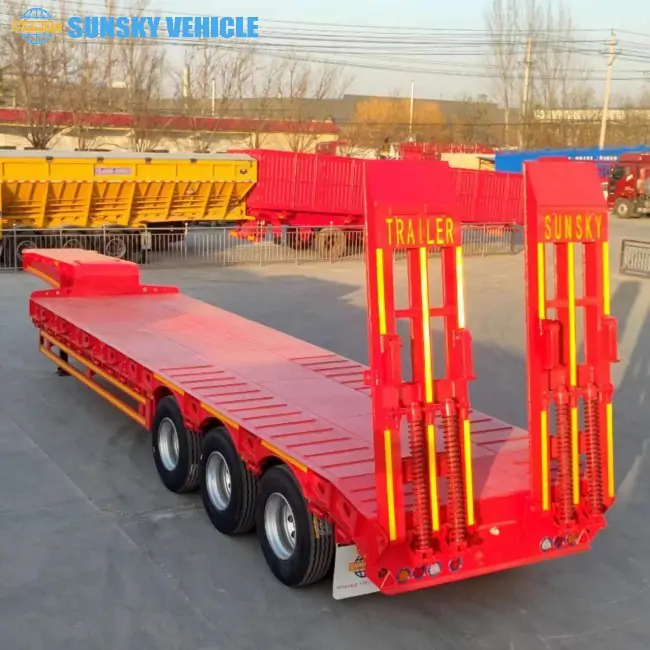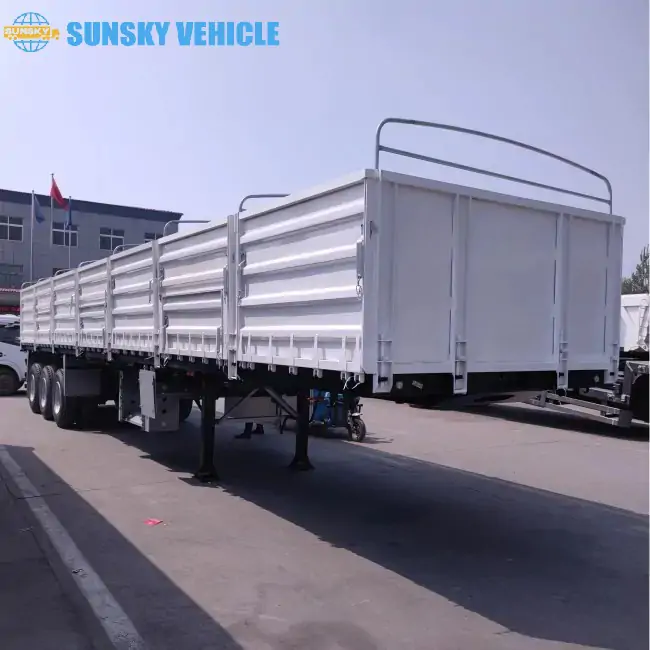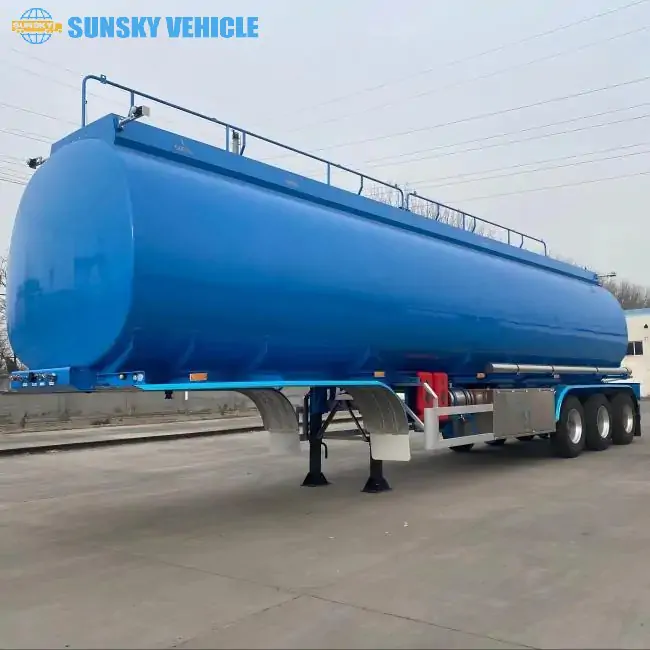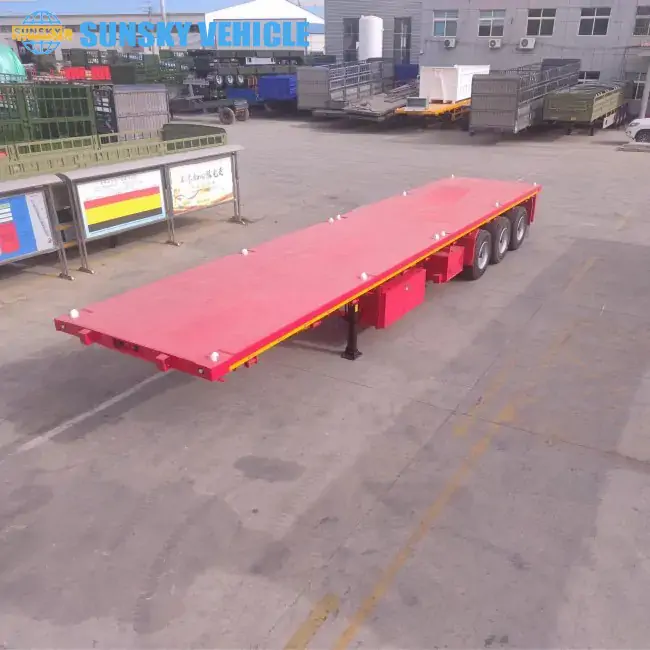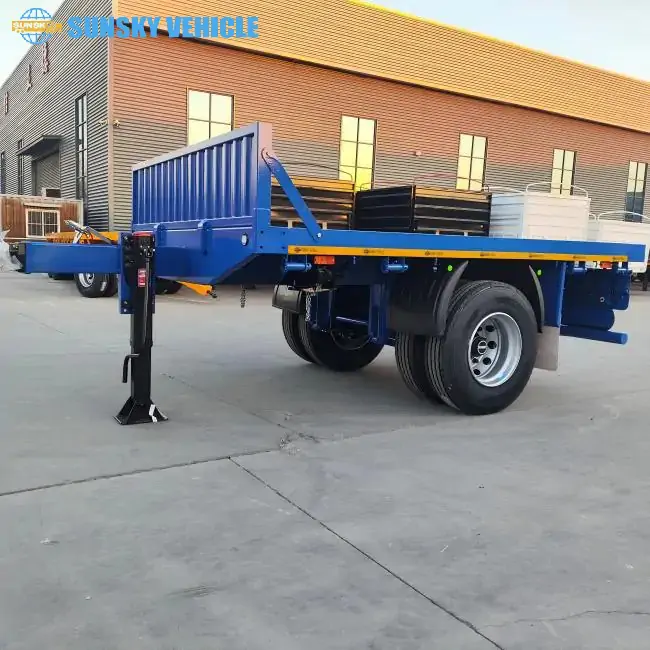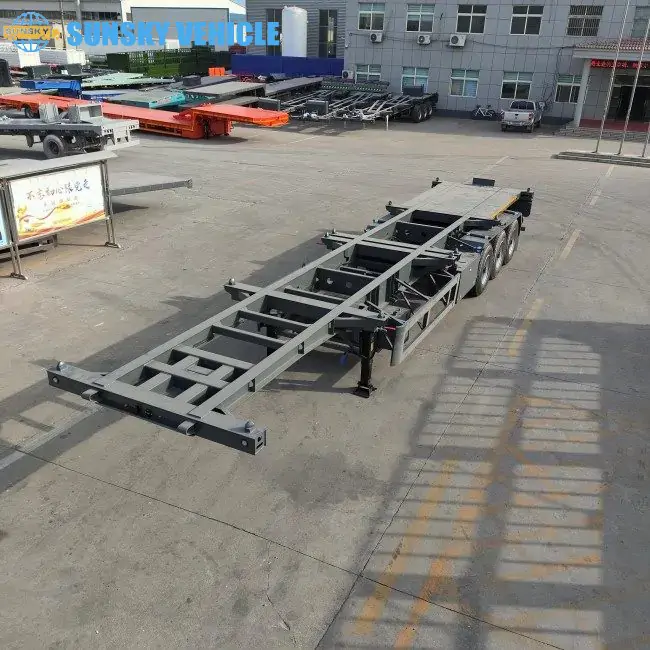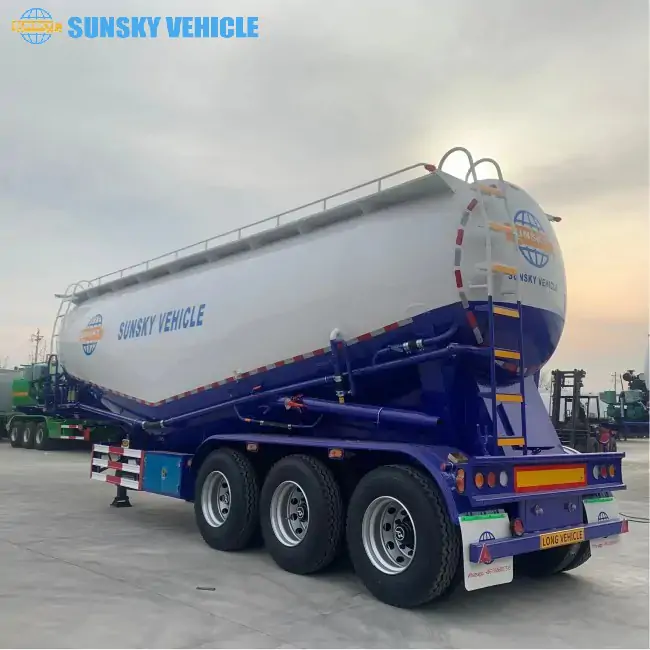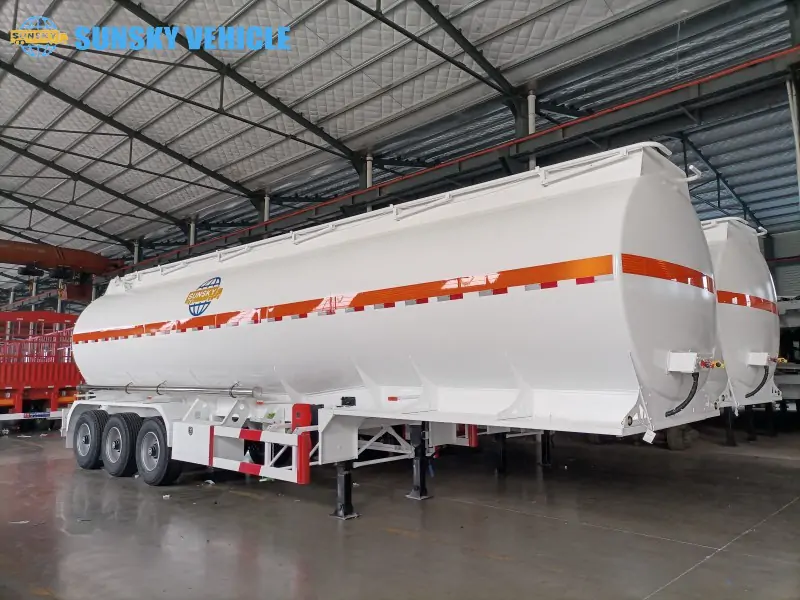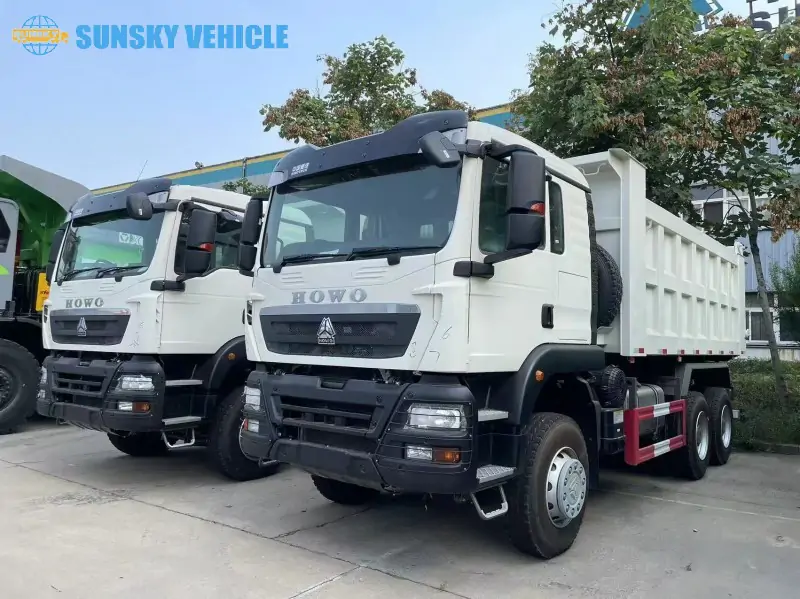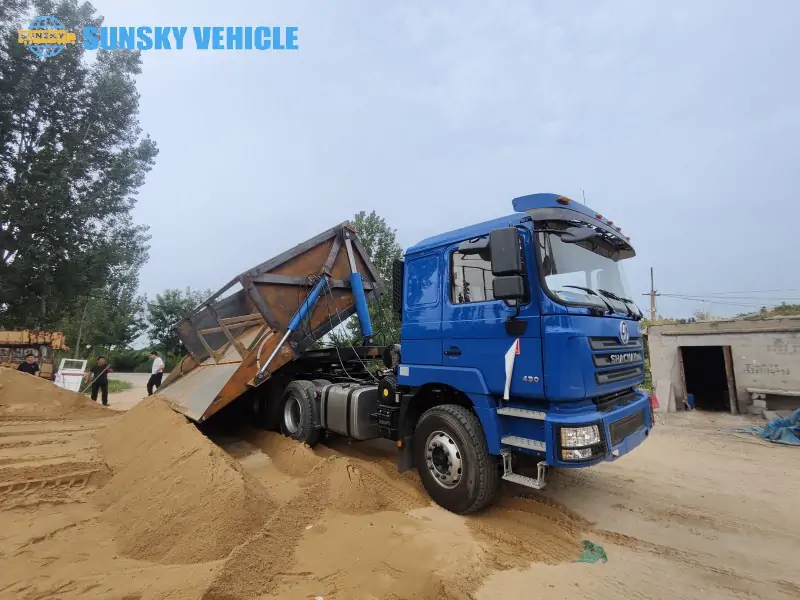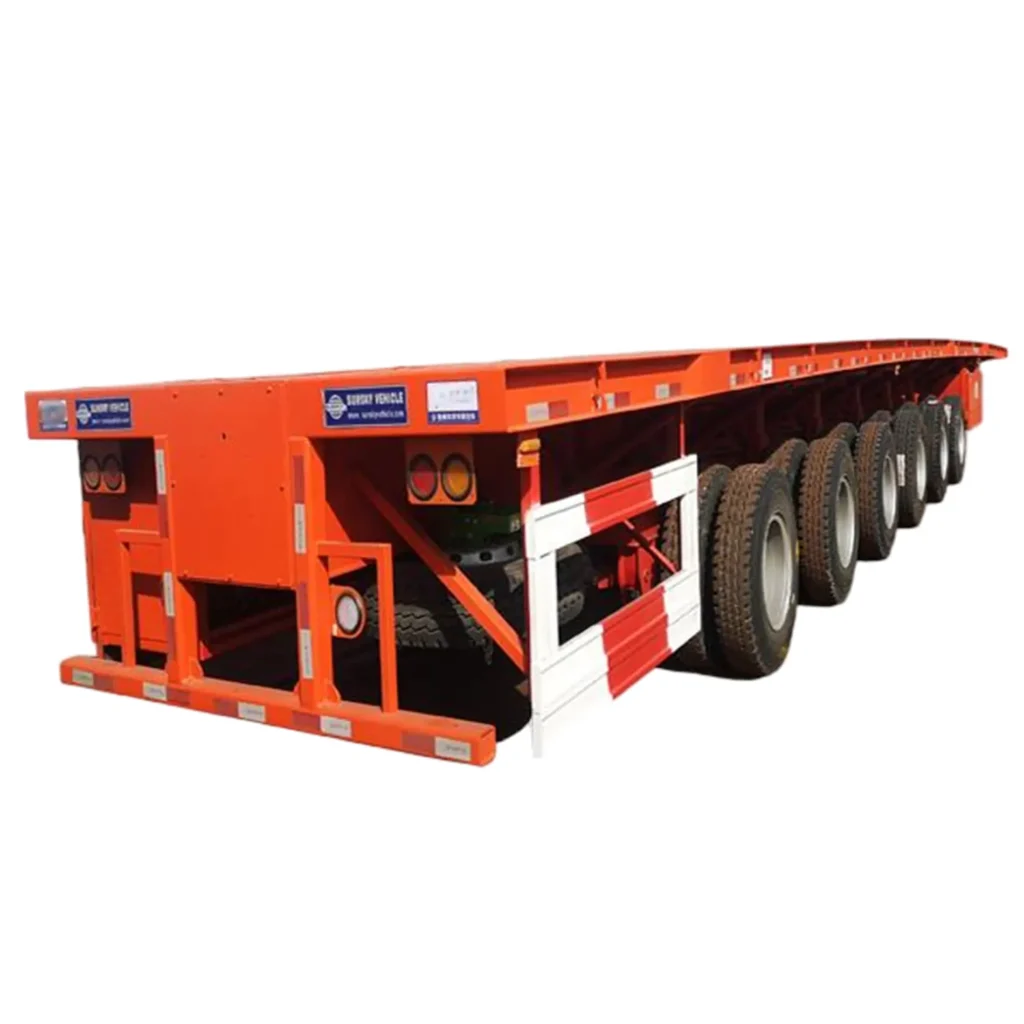
Wind Blade Trailer
Conquer wind energy logistics with our Wind Blade Trailers. Designed for secure, compliant, and efficient hauling of even the longest windmill blades, ensuring your project stays on schedule.
What is a wind blade trailer?
A wind blade trailer, also known as a wind turbine blade transporter, extendable trailer for wind blades, or telescopic trailer for wind turbines, is a highly specialized and exceptionally long semi-trailer designed exclusively for the safe and efficient transportation of wind turbine blades. Given the immense and ever-increasing length of modern wind blades (often exceeding 60-80 meters), these trailers feature a unique extendable main beam (telescopic chassis) that can be hydraulically lengthened to accommodate the specific blade size. They are equipped with advanced steering systems, specialized cradles, and multiple axles to navigate complex routes, ensuring stability, precision, and compliance for these critical oversized wind components.
Wind Blade Trailer for sale
No products were found matching your selection.
wind turbine blade transport trailer
application scenarios
Flatbed trailers are the ultimate flexible hauling solution, making them indispensable across numerous industries and diverse transport challenges
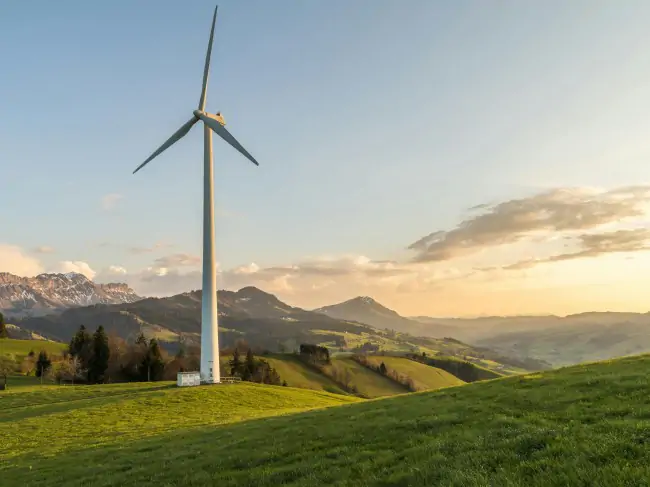
Wind Farm Construction: Transporting newly manufactured wind turbine blades from production facilities to wind farm sites, often across vast distances and challenging terrains.
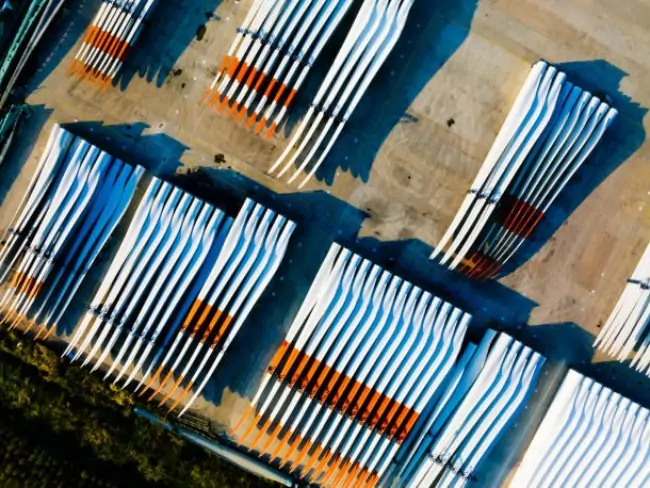
Wind Turbine Component Logistics: Serving as a crucial link in the supply chain for wind energy projects, ensuring timely delivery of blades to assembly points or remote locations.
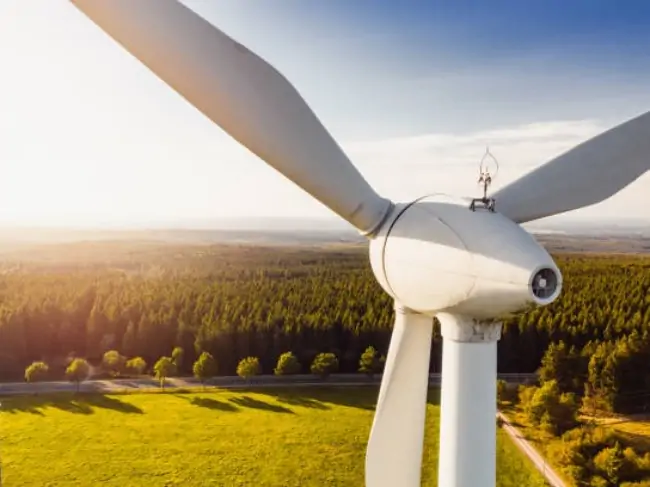
Infrastructure Development for Renewables: Enabling the build-out of renewable energy infrastructure by facilitating the movement of super-long and delicate components.
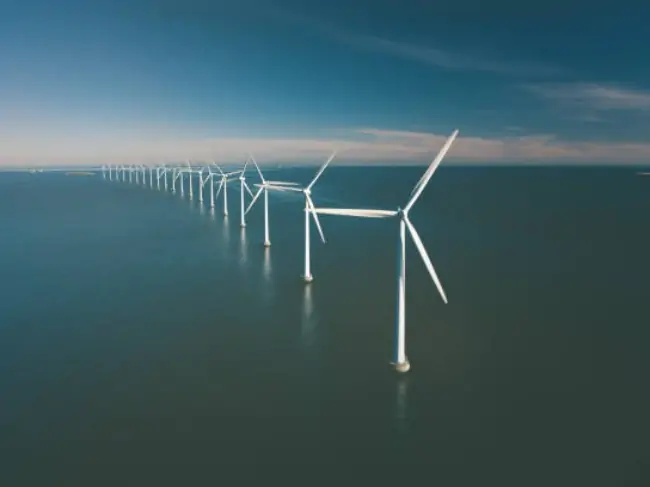
Offshore Wind Project Support: Transporting blades to port facilities for onward shipment to offshore wind farm installation vessels.
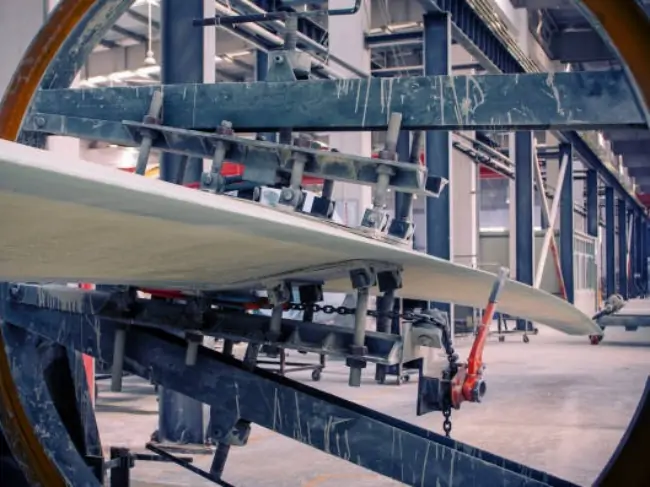
Maintenance & Repair: Occasionally used for moving blades for major repairs or replacement at existing wind farms.
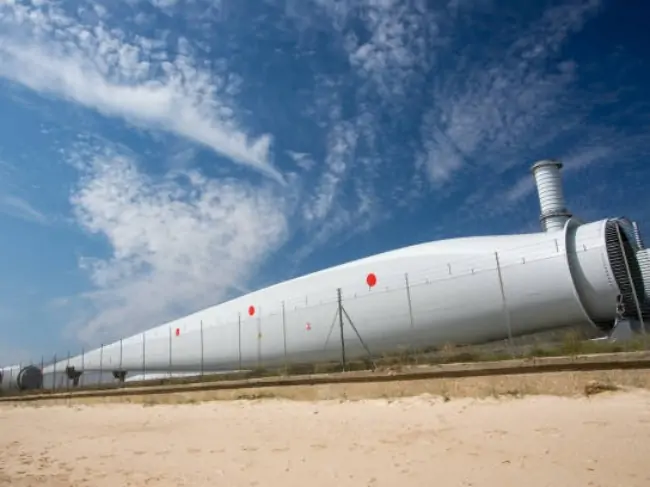
Research & Development: Transporting prototype or experimental wind blades for testing and evaluation purposes.
Standard configuration
-
SUNSKY axle
-
12R22.5 Tires
-
LED light system
-
high-tensile steel material
-
surface paint process
-
Leaf spring suspension
-
toolbox
Customizable options
-
Load Capacity
-
Landing gear
-
Securing Devices
-
Extendable Length
-
Steering System
-
Hydraulic System
-
BPW/Triangle/FUWA axles as needed
Looking for some new designs ?
wind turbine blade transport trailer
detail design
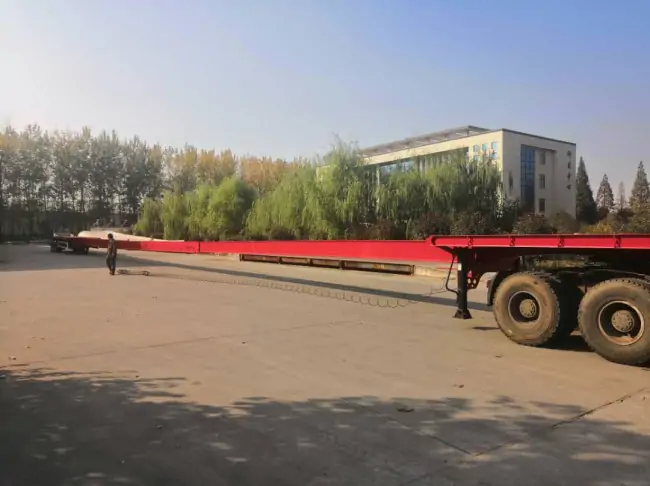
Multi-Stage Extendable Chassis (Telescopic Design): The defining feature, allowing the trailer’s main beam to hydraulically extend from a compact transport length to an immense length (e.g., up to 60-80+ meters). This telescopic capability is crucial for accommodating various blade sizes while ensuring the trailer remains road-legal when retracted.
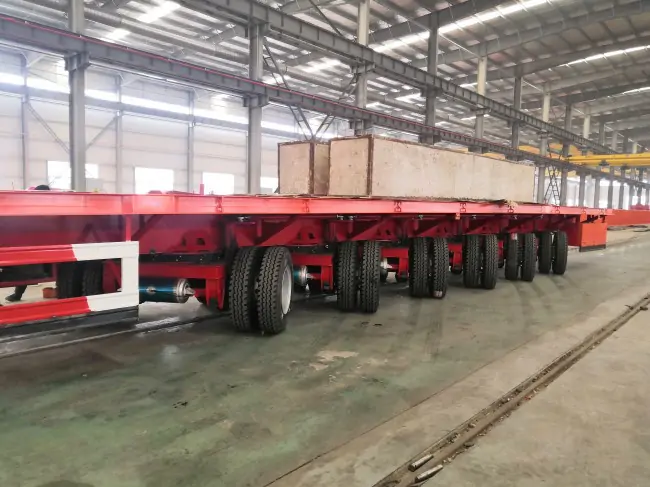
Advanced Hydraulic Steering Axles: Equipped with multiple self-steering or forced-steer hydraulic axles (often controlled remotely by an operator) that can pivot independently. This highly sophisticated steering system provides exceptional maneuverability, allowing the wind turbine blade transporter to navigate tight turns, sharp corners, and challenging routes often found on wind farm access roads.
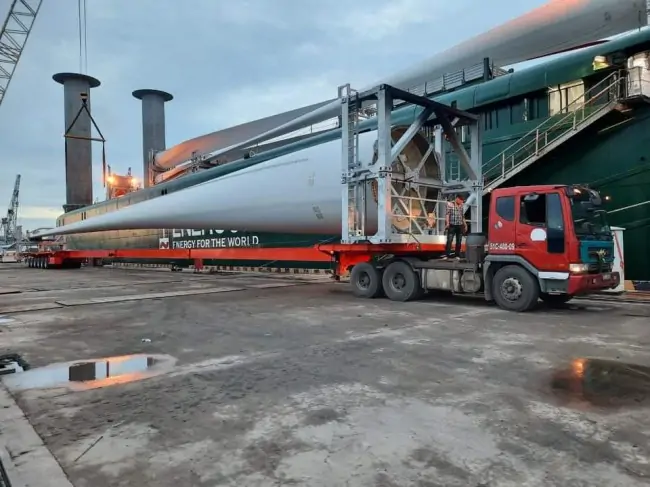
Specialized Blade Support Cradles & Clamps: Features custom-designed, adjustable cradles and clamps that securely hold the wind blade at multiple points along its length. These supports are often padded and articulate to distribute weight evenly, prevent stress concentration, and protect the delicate composite material of the blade from damage during transit.a
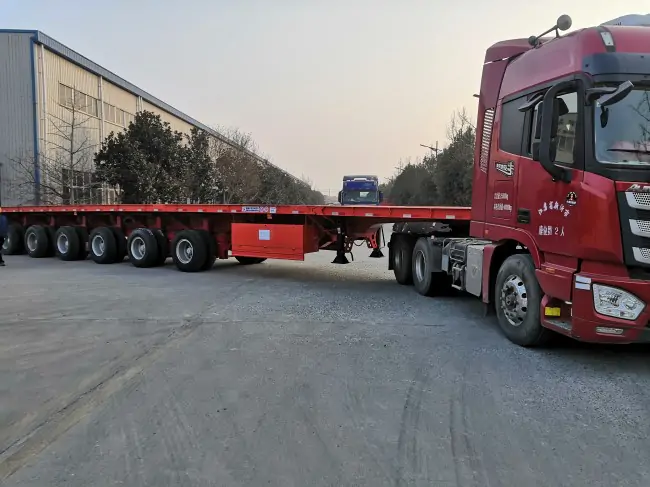
Robust Multi-Axle & Hydraulic Suspension System: Built with numerous heavy-duty axles (e.g., 4-8 axles or more, depending on blade weight/length) paired with a sophisticated hydraulic suspension system. This setup ensures optimal load distribution, maintains constant ride height, absorbs road shocks, and provides superior stability for the long, flexible cargo.
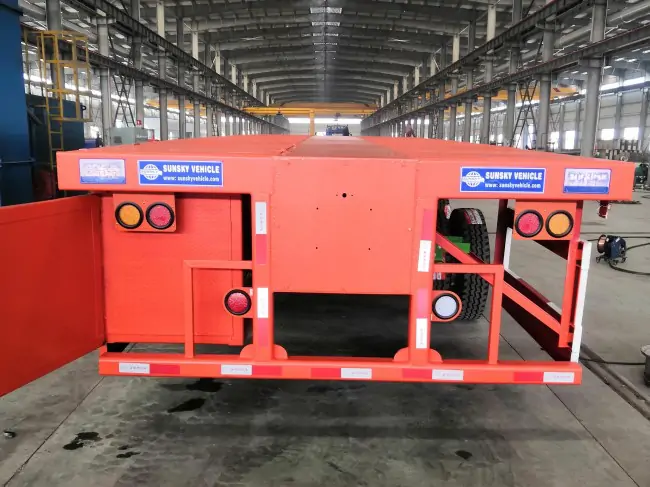
Integrated Safety & Visibility Features: Includes comprehensive LED warning lights, extensive reflective tape, oversized load signage, and often integrated telematics for real-time tracking and safety monitoring. These features ensure maximum visibility for other road users and strict compliance with oversized wind component trailer regulations.
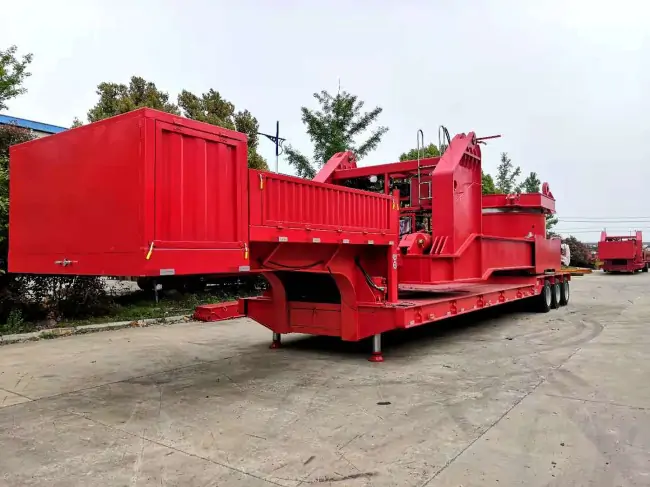
Optimized Gooseneck Design: The front section (gooseneck) is engineered to connect robustly with the tractor, providing stable support for the front of the blade while withstanding the dynamic forces of such an extremely long and sometimes flexible load. Some designs allow for vertical articulation to adjust clearance.
Video of flatbed trailer
retory wind adaptor trailer
62m wind blade trailer
wind blade trailer
windmill blade trailer
The trailer type you are looking for is not found
FAQ
How do wind blade trailers handle the extreme length of modern wind turbine blades?
Wind blade trailers, often referred to as telescopic trailers or extendable trailers for wind blades, are engineered specifically to manage the colossal lengths of modern wind turbine blades, which can now stretch well beyond 80 meters. Their core capability lies in a unique multi-stage extendable chassis, which can be hydraulically lengthened to precisely match the specific dimensions of the blade being transported. This telescopic design ensures that the immense load is supported along its entire length, preventing excessive bending, twisting, or stress on the delicate composite material of the blade during transit. Furthermore, advanced material science is applied in their construction, utilizing high-strength, lightweight steel alloys that provide the necessary rigidity without adding unnecessary weight. This innovative design allows these oversized wind component trailers to effectively distribute the load and maintain structural integrity, ensuring the safe and secure delivery of these vital wind energy components to even the most remote wind farm sites.
What makes wind turbine blade transporters capable of navigating tight turns and complex routes?
The remarkable maneuverability of wind turbine blade transporters in tight turns and complex routes is attributed to their sophisticated hydraulic steering axle systems. Unlike conventional trailers with fixed axles, these specialized trailers feature multiple independently steerable axles, often controlled remotely by a skilled operator who can walk alongside or position themselves strategically to guide the trailer. This precise, independent axle control allows the trailer to articulate sharply around corners, execute tight U-turns, and even perform “crab walk” maneuvers, where the trailer moves diagonally to clear obstacles. Additionally, many extendable trailers for wind blades are designed with a low-profile deck and specialized tires that minimize friction and enhance maneuverability. Coupled with meticulous route planning that identifies potential obstructions, the combination of advanced hydraulic steering and expert operation ensures these exceptionally long loads can safely navigate challenging terrains and congested areas.
What are the key safety considerations when operating an extendable trailer for wind blades?
Operating an extendable trailer for wind blades involves paramount safety considerations due to the sheer size, weight, and delicate nature of the cargo. Firstly, strict adherence to state and federal oversized/overweight load regulations is non-negotiable, requiring specialized permits for every jurisdiction crossed, which often dictate specific travel times (e.g., daylight hours only) and routes. Secondly, the deployment of multiple escort vehicles, commonly known as pilot cars, is essential, preceding and following the oversized wind component trailer to warn other motorists and manage traffic. Communication protocols among the convoy are critical. Thirdly, drivers must possess extensive experience in heavy haul transport and receive specialized training in operating these complex, highly articulated trailers. Lastly, continuous monitoring of weather conditions, blade stability, and surrounding infrastructure (bridges, power lines) is crucial to prevent accidents, ensuring the safety of the load, the crew, and the public.
What types of wind turbine blades (length, weight) can these special purpose wind trailers typically carry?
Special purpose wind trailers, often referred to as windmill blade carriers, are engineered to transport the full spectrum of modern wind turbine blades, accommodating a vast range of lengths and weights. While earlier models might have handled blades up to 40-50 meters, contemporary wind blade transporters are designed to carry the latest generation of super-long blades, frequently exceeding 60, 70, or even 90 meters in length. These advancements are driven by the increasing size of wind turbines aimed at maximizing energy capture. The trailers’ modular design, featuring extendable main beams and varying numbers of heavy-duty axles (e.g., 4 to 8+ axles), allows them to adapt to both the immense length and the significant weight of these advanced blades, which are often constructed from lightweight but robust carbon fiber composites. This adaptability ensures that as blade technology evolves, the wind turbine component trailer industry can continue to meet the logistical demands of the renewable energy sector.
What kind of permits and escorts are typically required for windmill blade transport?
Windmill blade transport requires an intricate web of permits and escorts, making it one of the most logistically challenging forms of heavy haul. Firstly, specific oversize and overweight permits must be obtained from every state or province along the planned route, a process that can take weeks or months due to the unique dimensions of the load. These permits often come with stringent conditions, such as restricted travel times (e.g., only during daylight hours, specific days of the week) and mandatory detours to avoid critical infrastructure. Secondly, multiple escort vehicles (pilot cars) are almost always required: typically one in front and one behind, sometimes with additional side escorts in congested areas, to alert oncoming traffic and manage lane closures. In some jurisdictions, especially for the longest blades or during complex maneuvers, local law enforcement or state police escorts may also be mandatory. The coordinated communication between the convoy members and public safety is paramount for the safe execution of such highly visible and challenging moves.
What maintenance is crucial for the hydraulic and telescopic systems of a wind turbine component trailer?
Maintenance for the complex hydraulic and telescopic systems of a wind turbine component trailer is absolutely crucial for ensuring reliability, safety, and longevity. Key procedures include:
- Hydraulic Fluid Management: Regular checking of hydraulic fluid levels and quality, ensuring it’s free of contaminants. Prompt fluid changes according to manufacturer specifications prevent pump and cylinder wear.
- Hose & Fitting Inspection: Meticulous inspection of all hydraulic hoses, lines, and fittings for signs of leaks, cracks, chafing, or wear. Any degradation can lead to fluid loss and system failure.
- Cylinder & Seal Checks: Examining hydraulic cylinders for signs of leaks, pitting, or damage to chrome rods. Seals should be inspected and replaced proactively to prevent internal bypass.
- Telescopic Mechanism Lubrication: All sliding surfaces and locking pins of the extendable chassis must be regularly cleaned and lubricated to ensure smooth extension/retraction and prevent binding or excessive wear.
- Structural Integrity: Periodic inspection of the telescopic beam’s welds and structural components for cracks or fatigue, especially at stress points.
- Sensor & Control System Testing: Ensuring all electronic sensors, remote controls, and safety interlocks associated with the hydraulics and steering are fully functional. Investing in professional, specialized maintenance for these oversized wind component trailers prevents costly downtime and ensures compliance with safety standards.
How do wind blade trailers contribute to the overall efficiency of wind farm development projects?
Wind blade trailers significantly contribute to the overall efficiency of wind farm development projects by solving one of the most complex logistical challenges: transporting extremely long and delicate wind turbine blades. Their specialized design ensures that these critical components arrive safely, undamaged, and on schedule, directly impacting project timelines. By enabling the transport of longer, more efficient blades, these special purpose wind trailers support the deployment of higher-capacity turbines, which in turn maximizes energy capture and the economic viability of the wind farm. Their ability to access remote or challenging construction sites, combined with precise maneuverability, minimizes delays in site preparation and turbine erection. This specialized transport capability is fundamental to the rapid and cost-effective expansion of renewable energy infrastructure, accelerating the transition to a sustainable power grid and making wind energy projects financially viable and operationally effective.
Connect with us
Ready to partner? We’re convinced Sunsky Vehicle is your best choice! Reach out through the form or by phone.

*Our team will answer your inquiries within 24 hours.
*Your information will be kept strictly confidential.
Contact Info
-
+86 13666007515
-
sunskyvehicle@gmail.com
-
No.99 Xiangyu Road, Xiamen Free Trade Zone,HULI DISTRICT, XIAMEN,CHINA Factory address: Liangshan district, Jining city, Shandong, China
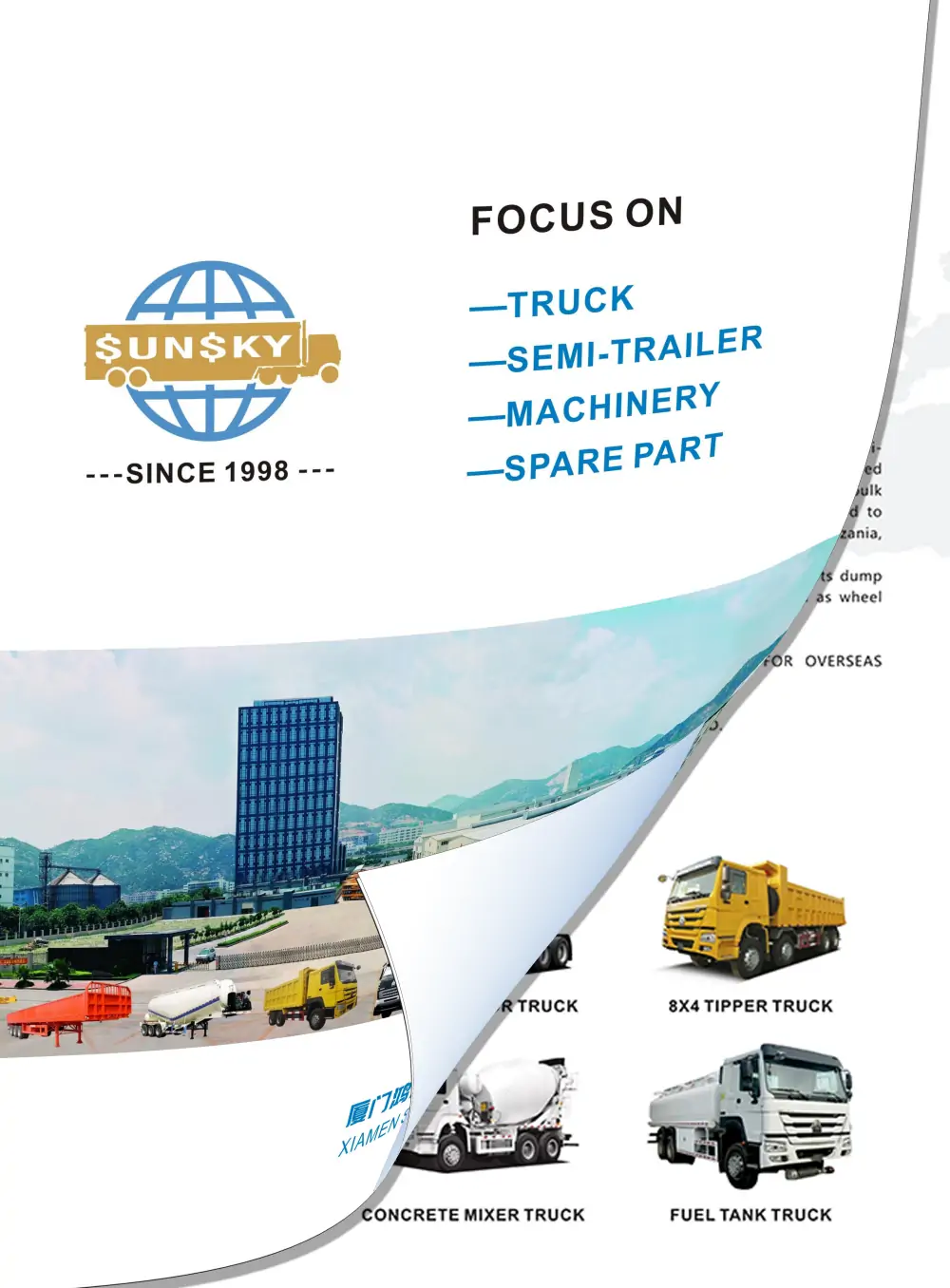
Copyright © 2020 Xiamen Sunsky Vehicle Co.,Ltd..All Rights Rese Co.,Ltd..All Rights Reserved.
Get A Quote
The more details you provide, the faster we can quote.
*Our team will answer your inquiries within 12 hours.
*Your information will be kept strictly confidential.

